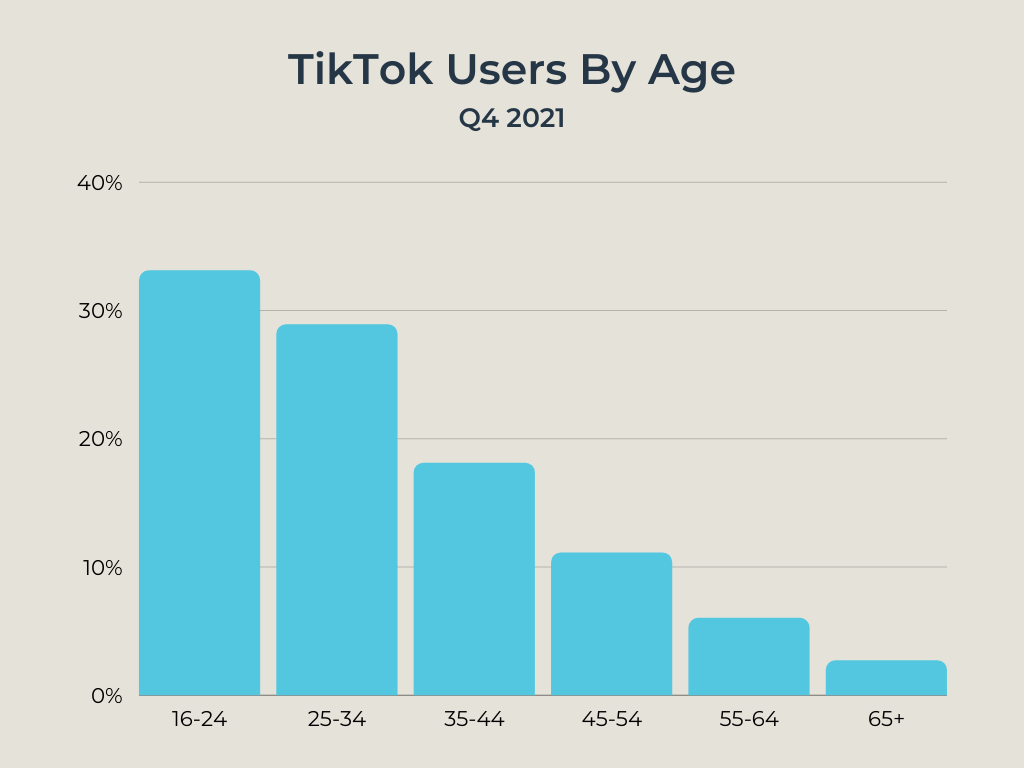The quest for new ways to drive business growth can feel particularly endless in the face of an ever-changing array of platform offerings and an ever-widening set of data restrictions and regulations. But it’s time to slay the dragons by taking an audience-first approach to marketing that will ensure your business is evolving with the times and making the most of opportunities.
Your marketing investment strategy should be driven by two primary engines: your core business objectives and your audience. And if your core business objective is related to growth, you need to specifically pay attention to how you’re building out the top of the funnel and priming those new potential customers.
Brands have depended on TV more than any other single channel to introduce themselves to and connect with new audiences at scale. But if you’re paying attention to how your audience is consuming media these days, you’re probably also considering TikTok as an exciting potential part of your brand marketing strategy.
This isn’t an either/or situation, to be clear. It’s about understanding the growth opportunity through the lens of your audience, and making investment choices based on those insights.
Understanding the opportunity: why TikTok needs to be a part of the brand investment conversation
From a brand dollars standpoint, shifting from TV to digital can seem radical. But it’s really about considering all of your channels as an integrated strategy. Every marketing decision should start with your audience, from how they’re consuming media, what they expect from brands, and what drives them to consider a brand in different media environments.
So let’s take a look at the way consumers are interacting with and using TikTok in particular to get a full accounting of the potential opportunity for your business.
One of the major assumptions many marketers make about TikTok is around age. You probably know that it’s not just cool teens using the platform, but the demographics are still more diversified than you might think. According to GWI, while the largest demographic on TikTok is indeed between the ages of 16-24, a full 38% of users are over 35 as of Q4 2021.

Source: GWI
With over 138 million monthly users in the US alone, it’s likely a significant part of your targeted audience is using TikTok. So let’s talk about why your brand should consider integrating the channel into your broader audience-first strategy.
According to GWI data, TikTok users are heavily engaged on all social platforms and are more likely to discover brands on social channels. They also overindex for online streaming (77%, Index 115) and underindex for live TV (57% Index 85).
When we consider how to effectively prime the upper funnel and use brand marketing budget efficiently, TikTok emerges as a major contender for a major cross-section of the population, particularly those who are more difficult to capture using traditional channels like linear TV.
Major brand marketing players are making the shift; State Farm, a Super Bowl commercial mainstay, decided to invest in TikTok for the big game in 2022 as the platform continues its transition from niche platform to marketing powerhouse. The team pointed to the potential long-term benefits of a TikTok-specific campaign as a major motivator.
According to Alyson Griffin, VP of Marketing at State Farm, “Rather than focus solely on one day and a traditional on-air spot, which admittedly was a huge success for us last year, we decided to tap into the ongoing excitement of #TeamStateFarm to extend engagement from the regular season into the postseason and beyond.”
But you shouldn’t consider investing in a vacuum; leveraging TikTok in tandem with your other channels and with both brand and direct response campaigns is crucial for success.
One touch is not enough: how TikTok is the ideal solution to the rise of second screening
Second screening has long been seen as the bane of the modern brand marketer’s existence. A full 86% of internet users use another device while they’re watching TV, according to GWI, which makes it more harder for brands to grab attention if they’re only relying on the single touchpoint of a TV ad.
Instead of looking at second screening as a problem, it’s time to think of it as a an opportunity. But you’ll only be able to take advantage of it if you’re taking that audience-led, holistic approach to your marketing.
GWI notes that 44% of second screeners are using social networks to research brands and products, and it might be tempting to stay in the more familiar world of Facebook and Instagram, or even the known quantities of Snapchat and Pinterest, when building out your social strategy.

Source: GWI
But TikTok’s own data indicates that 48% of TikTok users aren’t on Instagram at all and a whopping 75% of users on the platform are looking for help deciding what to buy, which should put the wide world of TikTok squarely in the media mix discussion.
Mobile second screening has risen by 22% since 2013 and it would be a safe bet to assume that it will only continue to grow. GWI breaks down four different general types of second-screeners, all of whom are actively discovering brands online while watching TV.

Source: GWI
From an audience standpoint, people use TikTok in ways that are both similar to channels you’re already familiar with and very new. Like Google, people turn to TikTok for information or to find out more about a certain product or service. Like TV, they’re there to be entertained. Like Instagram, they’re likely to be scrolling for long periods of time. Like Snapchat, they’re building niche communities with their own lexicon, references, and in-jokes.
More than any other platform, TikTok is personal and creator-focused, and provides a different kind of introduction for your brand to audiences that might be hard to reach or tough to grab attention from on other platforms.
It’s time to synchronize digital efforts with TV campaigns to maximize the impact of your ad dollars, especially since social activity spikes during commercial breaks as second-screeners focus on the device in hand. TikTok provides an additional opportunity to connect with potential customers in a new way that feels more personal, then helps your brand nurture customers into a performance-focused funnel.
The time for TikTok is now: to keep a competitive advantage, take an audience-led approach to marketing
As it becomes more and more essential to become less dependent on specific channels and diversify your marketing strategy, TikTok is at the front of the line when it comes to audience opportunity, even as the platform lags behind traditional channels like Google, Meta, and Amazon in their current marketing offering.
But the marketing world is being reshaped by ongoing data privacy restrictions on every channel, and we’re going to see those offerings continue to change and offer less of the granular targeting and attribution capabilities we’re used to. That can be scary, but it also represents an opportunity to embrace this new audience-led approach because you will have to if you want to drive business growth in the long run.
The key here is to remember that you are working with the same tools your competitors are on TikTok. Remember: when a bear is chasing you, you don’t have to be faster than the bear, just faster than the other guy.
(Full disclosure: we stole that from Google’s Chief Measurement Strategist Neil Hoyne.)
Targeting is more difficult on a platform like TikTok, but it’s going to get harder everywhere. Attribution is a challenge, but if your goal is business growth, you can’t just cling to granular performance and ROI metrics. You’ve got to invest in a more mature measurement approach and look to incrementality to truly understand the full impact of your marketing.
Getting started on TikTok requires a couple of things: alignment on your brand’s goals on the platform that integrates with your larger marketing efforts, a solid understanding of measurement capabilities and the right attribution framework in place, and a fresh look at your creative and messaging so it works on the platform.
We’ll be digging deeper into all of three of these in the coming weeks. For now, keep these four key tenets of TikTok investment in mind:
As you get started on the platform, the key takeaways you need to remember are:
- Audience insights are key to better marketing decisions: Go where the people are and pay attention to what they’re looking for in a particular channel, then integrate those insights into a cohesive media strategy.
- Second screening isn’t a death sentence, it’s an opportunity: Take advantage of the unique opportunity to connect with your audiences in multiple ways that work together to amplify your message across channels.
- Measurement is not just about conversion, it’s about the impact of marketing on business growth: Focusing solely on an overly narrow view of performance will hurt you in the long run. It’s time to evolve.
- TikTok creative is its own thing, but that doesn’t mean the barrier to entry is high: Audiences want brands to be authentic and transparent, especially on a platform like TikTok. That means original creative is key, whether that’s net-new creative you’re building specifically for the platform or creative you’re generating in partnership with creators, influencers, or users themselves.







Responses